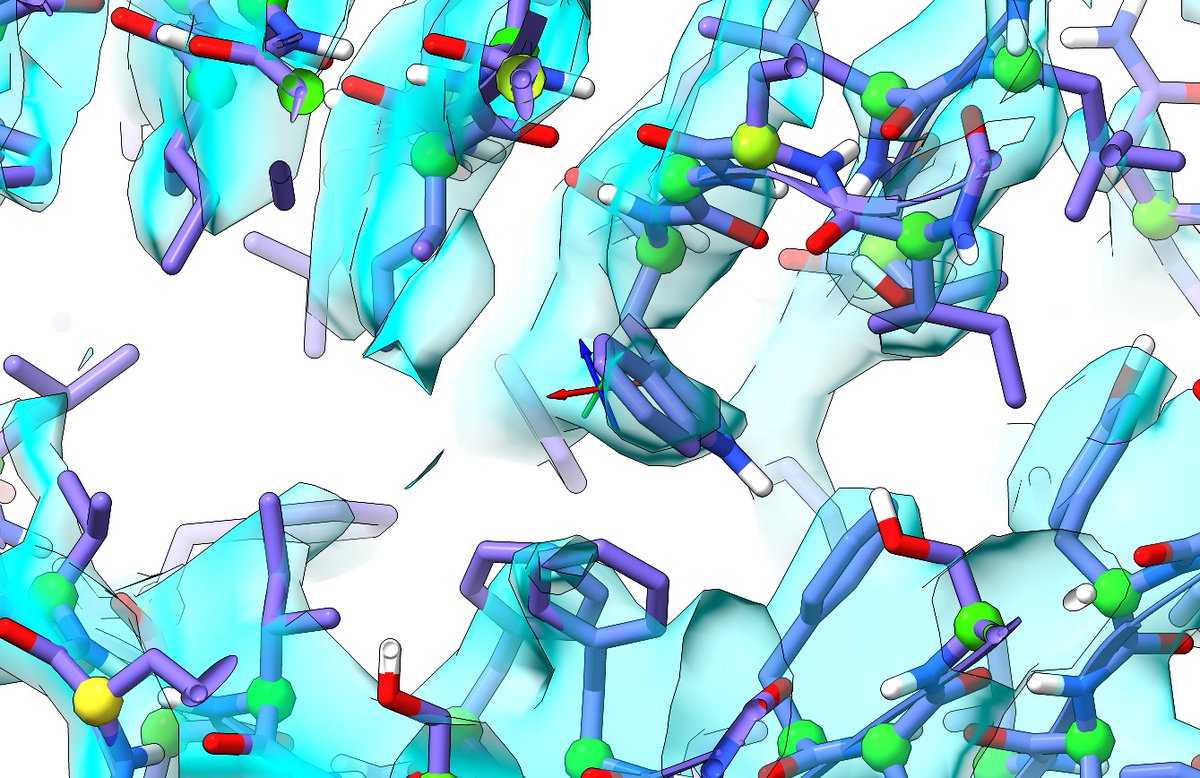In all cryo-EM maps of the SARS-CoV-2 spike protein density for the N-terminal domain has been really rubbishy, with modelling only really possible based on somewhat-weak homology to the original SARS equivalent... until now. (1/12)
On the left: a better-resolved region from this domain in 6vxx - general path of the backbone is fine, but sidechains are uninterpretable without outside info. The outer surface loops devolve to complete rubbish. On the right, the same site from 6zge. Clear, unambiguous (2/12)
So what caused this enormous difference in quality? I asked the authors (from the lab of Steve Gamblin at the Crick), and their honest answer was that they weren't sure - but they pointed me at this intriguing preprint from Christiane Schaffitzel: https://www.biorxiv.org/content/10.1101/2020.06.18.158584v1.full (3/12)
The focus of that manuscript is the serendipitous discovery of a fatty acid binding site in the spike protein (near the receptor binding domain, miles from the membrane). Noted as an unexplained tube in the density, and narrowed down by mass spec to linoleic acid (4/12)
... which was only present in the expression system due to supplementation of the culture medium with codliver oil. Sure enough, 6zge has a strong tube of density in exactly the site described in the preprint. How could I resist playing with that? (5/12)
The new version of ISOLDE will come with a command, "isolde add ligand {ID}" which will build in any ligand from the CCD. It's still a bit rough (doesn't attempt any initial fit to density, and only those already parameterised for MD will currently work). Still... (6/12)
Linoleic acid (EIC) is one of the available ligands. "isolde add ligand EIC" adds it near the current pivot point; "isolde ignore ~sel" restricts the next simulation to only the ligand. Add a couple of pins to guide it into the density... (7/12)
... and guide it into the density with a little tugging. Stop the simulation, "isolde ~ignore" to reinstate everything for simulation, remove the pins and start a new simulation to settle in in context. The result? A hand-in-glove fit. (8/12)
The tail fills a hydrophobic pocket between the RBD and the domain below; the carboxylate head salt-bridges to Arg408 on the RBD from the next chain. The net effect seems to be to lock the spike down into a more compact closed state. (9/12)
Why? What's the functional relevance of this? No idea. But as surprising as it seems, it *does* seem pretty clearly real, and specific to linoleic acid. (10/12)
Another curiousity: the beautiful clarity of this map makes it possible for me to claim with confidence that the disulfide bonds in the immediate vicinity of this site are reduced (i.e. cleaved to free cysteine) - but others elsewhere are still bonded. (11/12)
Again, biological relevance? I have no idea. But I do think this structure (and the BioRXiv preprint from Christiane Schaffitzel linked again here) throws up some *really* interesting questions for further study. fin/ https://www.biorxiv.org/content/10.1101/2020.06.18.158584v1.full

 Read on Twitter
Read on Twitter




